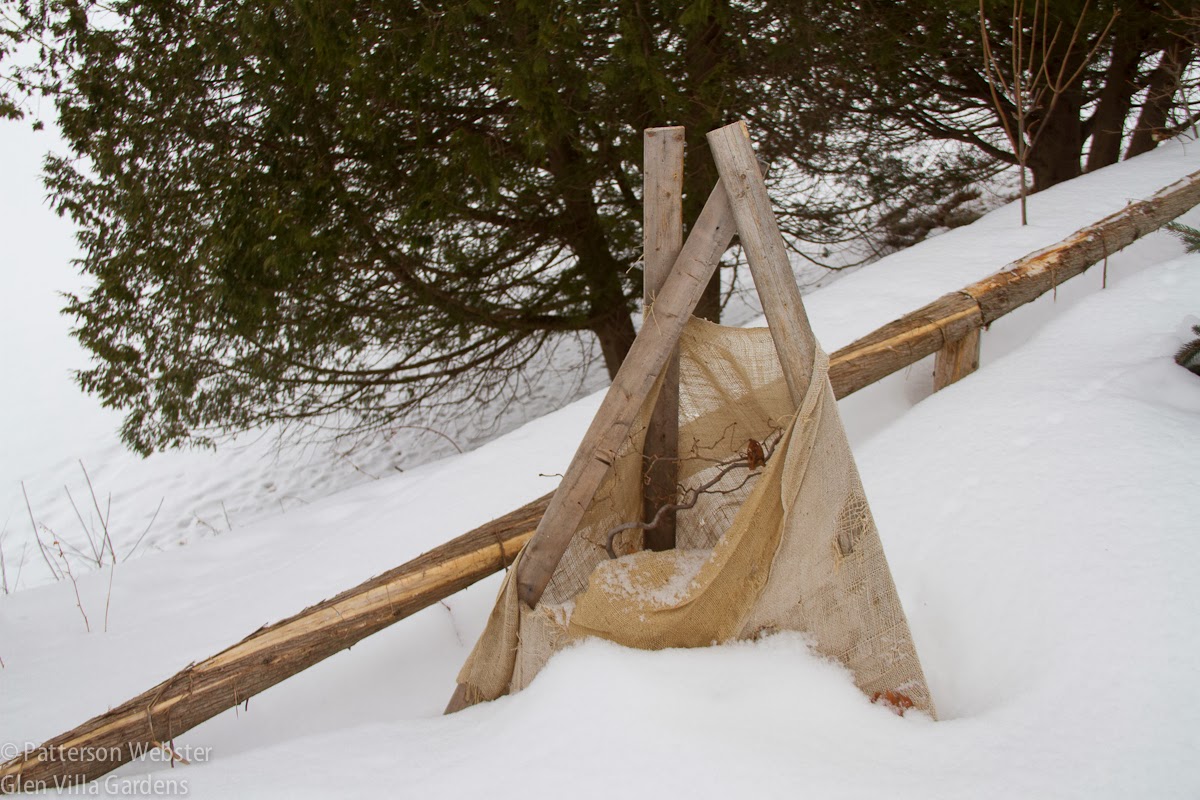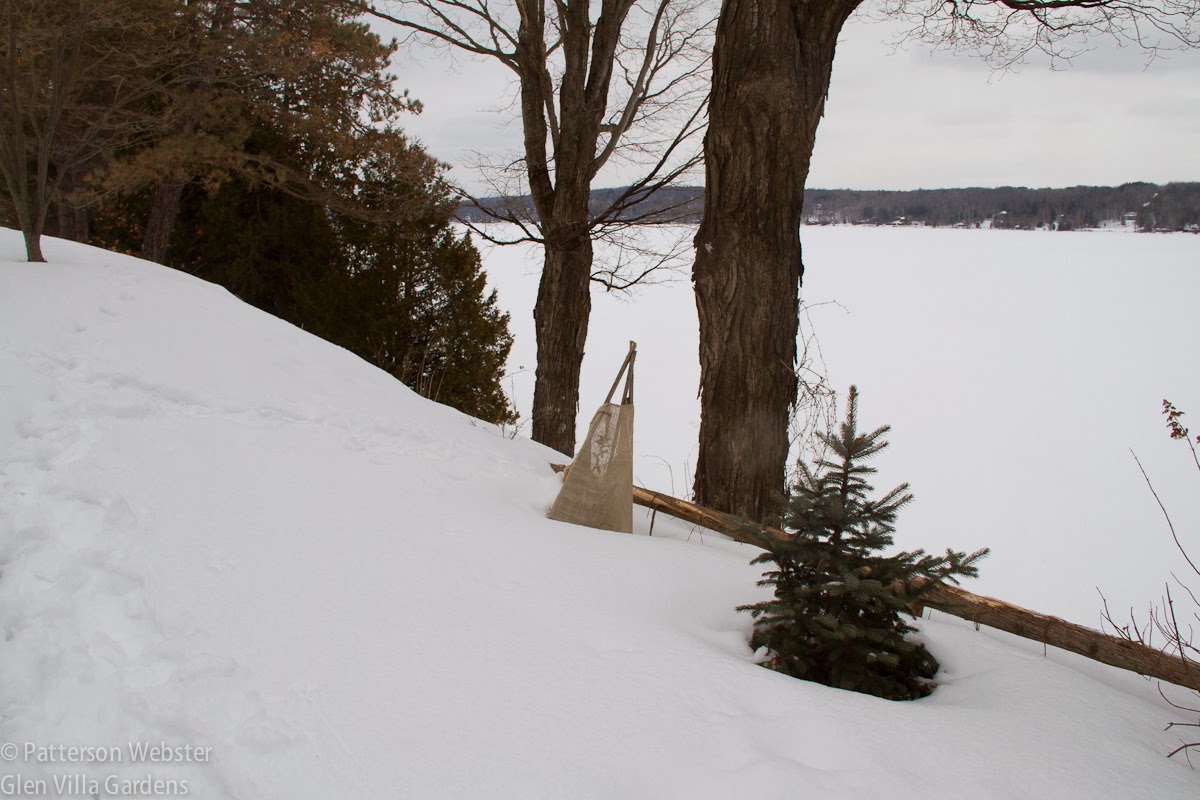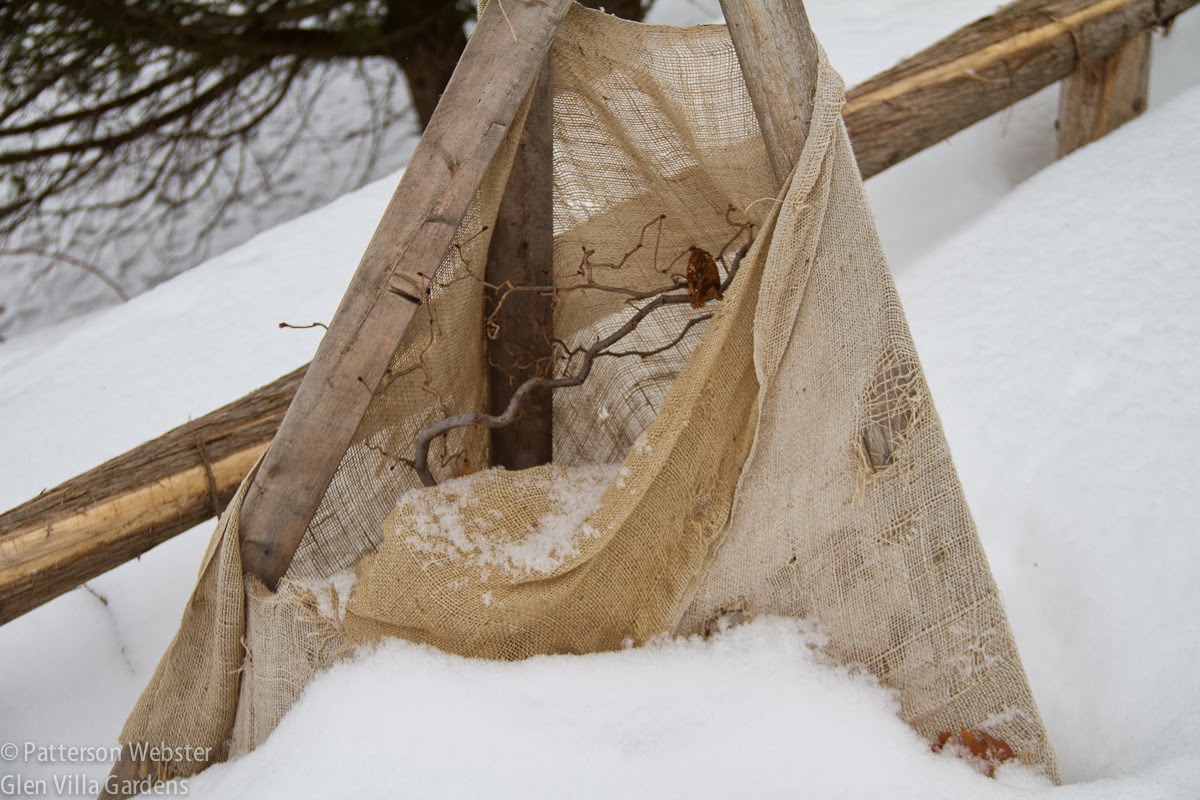Lucy Corrander, an English garden blogger at Loose and Leafy, has invited bloggers from around the world to join her in ‘following’ a tree.
Her invitation really caught my attention. It sounded like a great idea … a good monthly discipline and a way to focus on the changes that occur in a tree over a entire year.
So once a month from now on (or so the plan goes), I’ll be writing a short entry about the tree I’ve decided to follow, noting how it changes and develops, month by month.
Picking the tree to ‘follow’ wasn’t easy. I thought about following the large and beautiful linden tree that is at the end of the lawn or one of the birch trees that were bent over in the ice storm, that we tied up a few weeks ago. I considered following one of the ancient maple trees that grow along the bank above the lake, planted there over 100 years ago when the resort hotel that stood on our property was opening for business.
But in the end I settled on a tree I planted in 2012 in the lower garden: corylus avellana ‘Red Majestic.’ His Majesty goes by various other names: contorted filbert. European filbert. European hazel.
Call him what you will. I call him interesting. Although at the moment, he’s looking a little chilly.
 |
| Wrapped up for winter in not-so-regal robes. |
Wrapped up for winter, the tree may not appear very interesting, but give him time… he will become a multi-stemmed deciduous tree, growing to about 7 feet, if I’m lucky. His most obvious virtue is the twisted branches. Plus rich, coarse-textured burgundy foliage and catkins that should provide a strong accent in the lower garden.
This shot shows the snow-covered border where I planted the tree in the summer of 2012. He has grown only a little bit — or maybe not at all — since then. Under all the snow, it is hard to tell. But this summer I’m hoping for a growth spurt.
 |
| The burlap tent looks like its about to slip down the hill and into the frozen lake. But I promise, underneath the burlap the tree is straight. |
A close-up under the burlap that is protecting the tree from winter winds shows those twisted branches.
 |
| You can see the contorted branches But what is that lumpy thing? |
The burlap will come off in a month, or maybe less, depending on the weather. Next winter, I hope we won’t need it at all. Then we can enjoy the contorted form. That is, if His Majesty grows tall enough for the branches to stick out of the snow.





